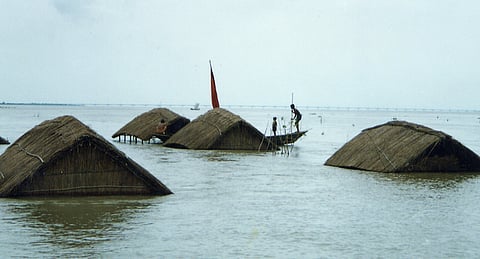Photo: Screengrab from 'Sand and Water' (2002)
Culture
Screen Southasia: Q&A session for ‘Sand and Water’
A conversation with the filmmaker Shaheen Dill-Riaz, director of ‘Sand and Water’.
At Screen Southasia, we host monthly online screenings of compelling documentaries from the region, including Nepal, India, Kashmir, Pakistan, Afghanistan, Bhutan, Tibet, Myanmar, Bangladesh, Maldives and Sri Lanka. We present a diverse range of films, both classic and new, that showcase the unique cultures, histories and perspectives of Southasia. Screen Southasia is a partnership between Himal Southasian and Film Southasia. For updates on future screenings and Q&A sessions, sign up here.
For our latest Screen Southasia Q and A session, recorded on 3 July 2023, we speak with Shaheen Dill-Riaz, director of the documentary film 'Sand and Water' – which follows the lives and experiences of natives of Char Islands in Bangladesh.

